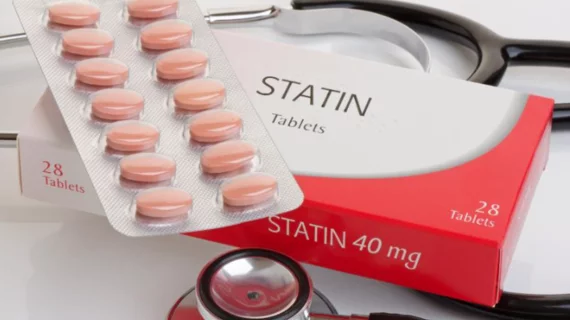‘The next target after vaccines’: Fighting fake news about statins
Fear-based “fake news” about statin therapy is driving non-adherence to the drugs in the U.S., according to an editorial published in JAMA Cardiology June 26, fostering a culture of mistrust and misinformation that could easily deter heart patients from a treatment that might be beneficial to them.
In her article, Ann Marie Navar, MD, PhD, associate editor of JAMA Cardiology and a member of the Duke Clinical Research Institute, drew a parallel between statin skeptics and “anti-vaxxers,” a community of people who have made headlines for decades for refusing to vaccinate themselves and their children. Anti-vaxxers often cite sources like a 1998 Lancet paper that linked the MMR vaccine to autism—a paper that’s since been retracted—as evidence that vaccines can cause learning disabilities and death, and that information spreads quickly via social media and word-of-mouth.
“While headlines shine the spotlight on vaccine refusal, the same fake medical news and fearmongering also plague the cardiovascular world through relentless attacks on statins,” Navar wrote.
She said one “health website” that promotes anti-vaccination also suggests statins cause memory loss, cataracts, pancreatic dysfunction, Lou Gehrig disease and cancer—all false claims. But people read and share these articles, books and documentaries as “evidence” that Big Pharma is pushing statin therapies for a profit.
We know that what people read influences their actions, Navar said, and indeed, one 2016 study in the European Heart Journal found that on a population level, statin discontinuation increased after negative news stories about statins surfaced in those communities. In another study, more than one in three heart patients said they declined a statin prescription solely for fears of adverse effects.
“Measles outbreaks are highly visible: a rash appears, public health agencies respond, headlines are made and the medical community responds vocally,” Navar wrote. “In contrast, when a patient who has refused a statin because of concerns stoked by false information has an MI, the result is less visible. Nevertheless, cardiologists and primary care physicians observe the smoldering outbreak of statin refusal daily.”
There’s a lot of work to do to combat the influx of false information about statin therapy, Navar said. Here’s how she suggests to start:
- Speak out as experts. Researchers will need to continue to prove the safety and tolerability of statins for the foreseeable future, Navar wrote, but psychology tells us people are more likely to stick to their strongly held beliefs when confronted with contradicting evidence. Experts speaking out more colloquially, like on social media and in public conversations, could help diffuse the idea that statins are dangerous.
- Create a medication information sheet. Just as parents are handed a one-page Vaccine Information Sheet when their child receives a vaccine, Navar recommends the cardiology community create a similar resource for statin users, endorsed by governmental agencies and patient groups. That way patients are aware of the real risks and benefits of statins before they ever head to a pharmacy.
- Make it easier to adhere to statins. Options to increase initiation and persistence to statins could include extended medication supplies that last a patient a full year, automatic refills, $0 copays and comprehensive adherence programs, Navar said.
- Build the public’s trust. Though neither vaccines nor most prescribed statins are huge revenue earners for pharmaceutical companies, Navar said anti-vaxxers and their anti-statin peers rely on the idea that drug companies are advertising their products for the wrong reasons. She said we might restore public trust and confidence through drug pricing reform, access to patient support programs and greater transparency in research.
Navar said that given the global prevalence of CVD, the number of lives lost to inadequate prevention because of false information about statins could number in the millions.
“The medical community needs to stay vigilant,” she wrote. “Statins may have been the next target after vaccines, but the epidemic of fake medical news will almost certainly continue to spread to other therapeutic areas. This threatens not only the trust patients have in their medical system, their physicians and the medical literature, but also in the health of the nation.”

